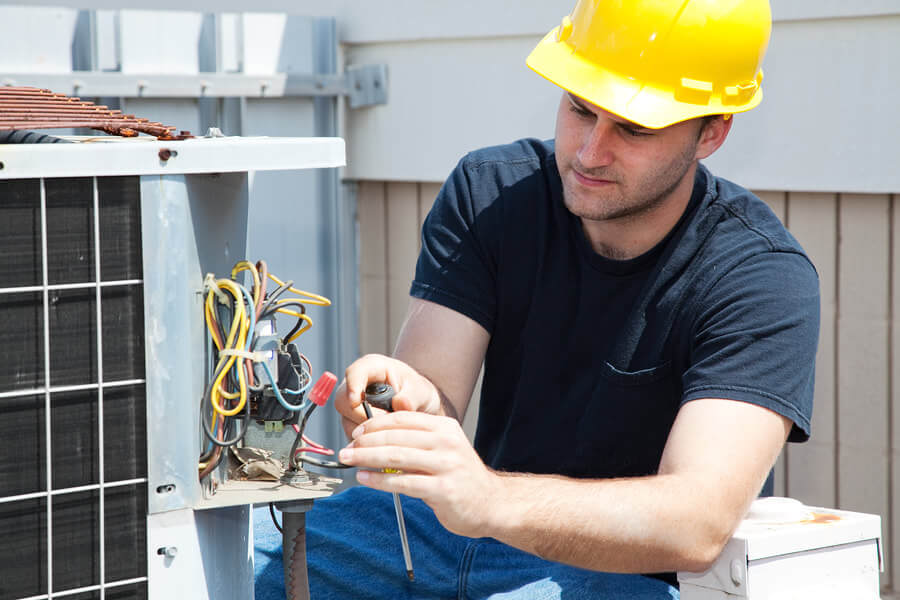When temperatures dip below freezing, your furnace has to work overtime to keep your home warm and comfortable. Unfortunately, the cold weather can sometimes cause problems with your heating system. Here are some of the most common furnace problems that occur in extreme cold weather.
If you need an HVAC technician to help with your furnace, check out this article.
5 common furnace problems in extreme cold
Here are some common furnace problems that occur in extreme cold.
- Furnace pilot light problems: In extremely cold temperatures, the pilot light in your furnace can go out as a result of condensation or air drafts. If this happens, you will likely need to relight the pilot light.
- Ignition problems: The ignition system on some older furnaces may fail when it gets too cold outside. This can cause your furnace to fail to turn on or make loud banging noises when it is trying to start up.
- Frozen heat exchanger: If the heat exchanger in your furnace freezes, it can cause a buildup of condensation and ice inside the unit, leading to inefficiency and possible damage to other components.
- Blocked air filter: In extremely cold weather, the air filter in your furnace may become clogged with snow or ice, leading to restricted airflow and reduced efficiency.
- Faulty thermostat: If your thermostat is not working properly in cold weather, it can cause problems with your furnace’s temperature regulation and result in uneven heating throughout your home.
It is important to keep an eye out for any of these potential furnace problems in extreme cold weather and address them as soon as possible. Doing so can help you avoid costly repairs and ensure the safety and efficiency of your heater during the colder months.

Troubleshooting common furnace problems
If you notice any of the common furnace problems mentioned above during cold weather, it is important to take steps to troubleshoot them as soon as possible. Here are some tips for troubleshooting furnace problems in extreme cold.
- Check your thermostat: Make sure your thermostat is set correctly and that there are no wiring problems causing incorrect readings.
- Inspect your air filter: If the air filter is clogged, replace it with a clean one to restore proper airflow.
- Inspect your pilot light: Make sure the pilot light is lit and that there are no drafts or obstructions preventing it from staying lit.
- Check for frozen parts: Look for any frozen parts in your furnace, such as a heat exchanger or evaporator coil. If there is ice present, you will likely need to call a professional to repair the issue.
- Check your ducts: Look for any leaks or blockages in your ductwork that could be causing problems with airflow and efficiency.
- Call a professional HVAC technician: For more complex issues, it is best to call a professional HVAC technician for help. A trained technician can identify the source of your furnace problem and provide the necessary repairs or maintenance to restore it to working order.

Keep your furnace well-maintained for optimal performance
To ensure your furnace is working properly in extreme cold weather, it is important to keep up with regular maintenance and inspections. Having a professional HVAC technician inspect your system at least once a year can help you identify any potential problems before they become larger issues.
Regular maintenance should also include changing or cleaning the air filters on a monthly basis and checking the pilot light and other components to make sure they are in good working order. Taking these steps can help your furnace work optimally, even in extreme cold temperatures.
By paying attention to common furnace problems that occur during extreme cold weather and taking action to properly maintain your system, you can ensure a safe and efficient heating experience for your family. Doing so can also help you avoid costly repairs and extend the life of your furnace.
That’s why it is important to take action now and make sure your furnace is ready for extreme cold weather by keeping up with regular maintenance and inspections, changing or cleaning air filters on a monthly basis, and checking the pilot light and other components. With proper maintenance and preparation, you can enjoy a safe and efficient heating system this winter.

Have a backup plan in case of a furnace breakdown
No matter how well you maintain your furnace and take measures to prevent potential problems, it is still possible for your furnace to break down in extreme cold weather. That’s why it is important to have a backup plan in place in case of an unexpected breakdown.
One option is to invest in space heaters or other temporary heating solutions that can be used in the event of a furnace breakdown. This will allow you to stay warm until your furnace can be repaired or replaced. It is also important to make sure that any space heaters are properly ventilated and kept out of reach of children and pets.
Another option is to contact an emergency HVAC repair service that can provide assistance in the event of a breakdown. Many services offer 24/7 support and can provide assistance no matter what time it is – even during extreme cold weather.
Having a backup plan in place will help you stay warm and comfortable, even if your furnace breaks down unexpectedly. With the right preparation, you can enjoy a safe and efficient heating system this winter.
Conclusion
When it comes to keeping your furnace safe and efficient in extreme cold weather, preparation is key. By paying attention to common furnace problems that occur during such conditions and taking action to properly maintain your system, you can ensure a safe and efficient heating experience for your family.
Additionally, having a backup plan in place will help you stay warm and comfortable, even if your furnace breaks down unexpectedly. With the right preparation, you can enjoy a safe and efficient heating system this winter.






